A metacercarial cyst, a stage in the life cycle of the liver fluke (Fasciola hepatica), a parasitic flatworm. The juvenile fluke can be seen moving inside the cyst. Metacercariae attached to vegetation are ingested by ruminants, or by humans eating uncooked foods such as watercress. In the duodenum, immature flukes emerge from these cysts and migrate into the bile ducts. Here they reach maturity and pass eggs into the faeces, which contaminate water. The eggs hatch producing larvae which infect certain species of freshwater snail, the liver fluke's intermediate host. Larvae emerge from the snail and form metacercarial cysts on nearby vegetation, thus continuing the fluke's life cycle. Liver flukes cause fascioliasis, a liver disease with symptoms including digestive problems, fever, pain, anaemia and jaundice. Footage filmed at Ridgeway Research, Gloucestershire, United Kingdom.
Details
WebID:
C01840612
Clip Type:
RM
Super High Res Size:
1920X1080
Duration:
00:00:36.000
Format:
QuickTime
Bit Rate:
23 fps
Available:
download
Comp:
200X112 (0.00 M)
Model Release:
NO
Property Release
No

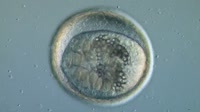
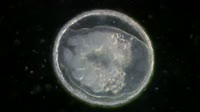
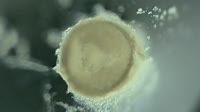
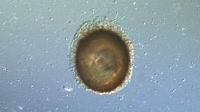
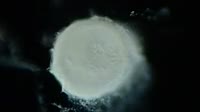
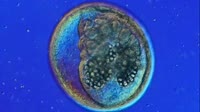


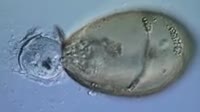



 Loading
Loading